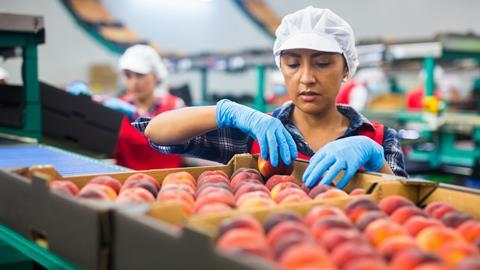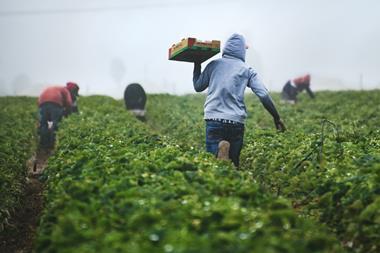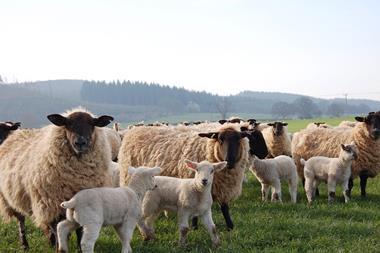The UK’s food and drink sector is battling a serious labour shortage, with Brexit and Covid slashing the number of EU workers over the past two years. The pandemic caused many European workers to return home, while post-Brexit immigration changes removed the rights of many EU workers to freely live and work in the UK. And Brits haven’t yet stepped up in sufficient numbers to fill the gaps.
So how has the UK food and drink workforce changed over the past decade? And which sectors are hardest hit by shortages and an ageing workforce? To find out, we analysed exclusive data from ONS
The UK’s food & drink workforce is shrinking
Our data shows the UK’s total food and drink workforce fell dramatically at the beginning of the pandemic, from 2.1 million people in 2019 to just 1.7 million in the first quarter of 2021. While it reached 1.8 million by Q3 2021, the data does not account for the impact of furlough ending at the end of September, as official data for this period is not yet available.
The reduction has primarily been driven by a big reduction in the number of EU workers employed by the food and drink sector in recent years. In 2017, there were 339,845 EU workers employed, accounting for 16% of the UK’s total food and drink workforce. However, the number of EU workers employed in UK food and drink began falling in the lead-up to Brexit and by Q1 2021, there were just 218,069 EU workers – accounting for 12% of the total food and drink workforce.
Read more: Where have the food industry’s workers gone?
Last year, the rate of decline in EU workers accelerated, with 162,188 EU workers employed by the sector by Q3 2021, accounting for just 9% of the workforce – its lowest level in a decade. The percentage of non-EU workers has also fallen, from 7% in 2011 to 4.5%.
Farming and meat processing have suffered major blows
Hospitality and farming have seen the biggest contraction in numbers of workers, though it appears this is as much a product of a British worker exodus as a European one. Around 60% of the workers who left the industry since before the pandemic are British, a proportion that rises to over 80% for permanent farming staff.
Food manufacturing has suffered considerably less from a worker exodus. However, the meat processing sector, which was heavily reliant on EU labour, has suffered a big blow.
Number of workers by sector

Companies are struggling to find low and unskilled labour
According to our data, labour shortages are less of an issue when it comes to highly skilled and skilled roles. However, over half (56%) of companies are facing ‘chronic shortages’ of labour when it comes to lower skilled roles, while 67% are facing shortages in seasonal labour. Shortages are most acute when it comes to unskilled roles (72%), such as pickers and packers.
Some sectors are facing an ageing workforce
Data taken from the ONS Quarterly Labour Survey in Q3 2021 shows farming is most affected by an ageing workforce, with 32% of its workers aged 55-64, while just 11% are in the 16-24 age bracket. Across food processing, over 40% of the workforce is aged over 45, while the meat processing sector has a very small percenage of workers aged 16-24. In contrast, hospitality has the biggest percentage of workers aged 16-24, at 43%.




















No comments yet